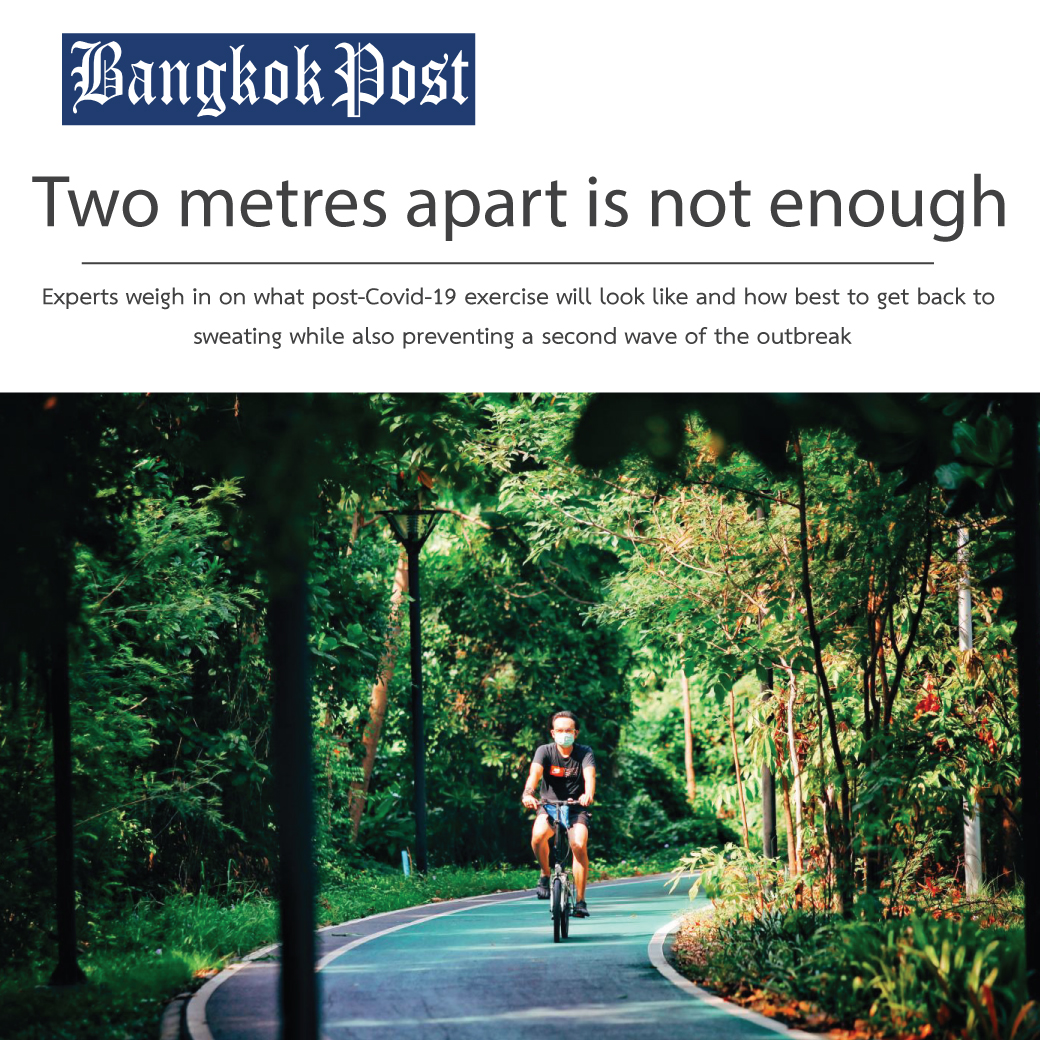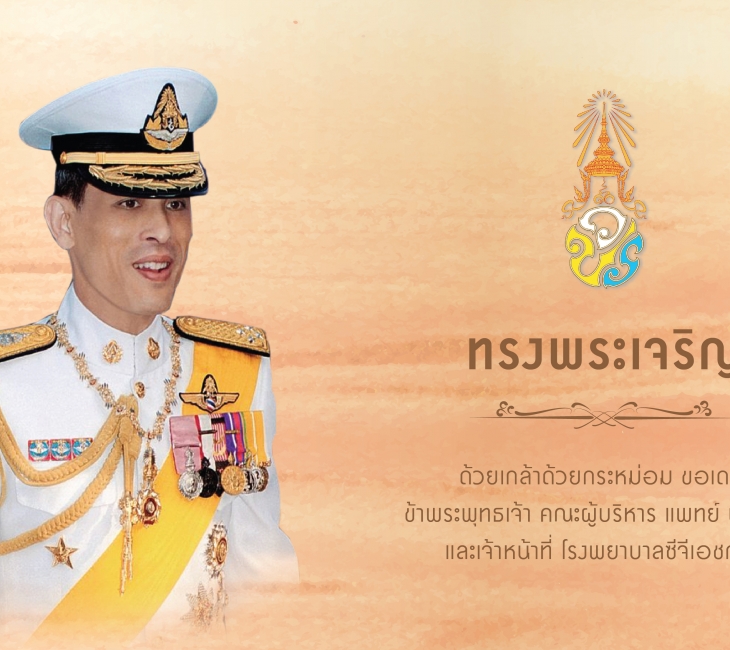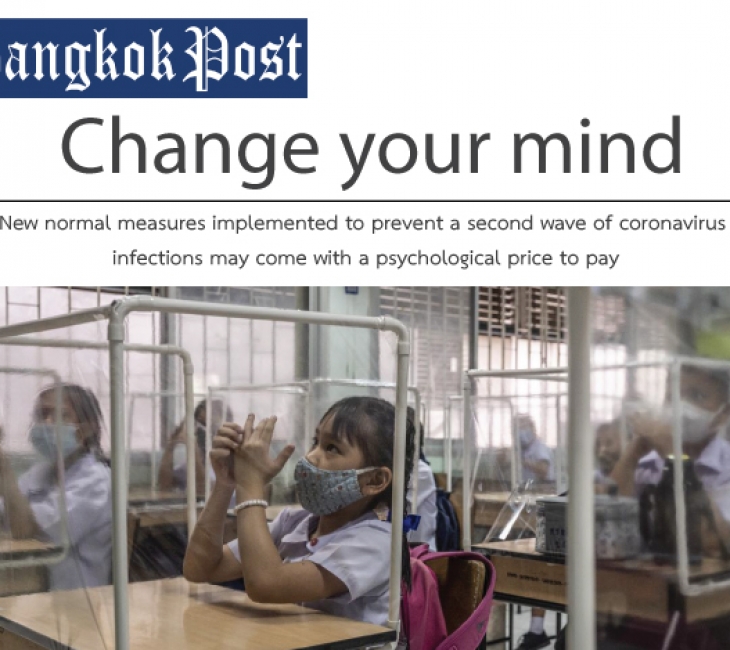Two metres apart is not enough
 No matter how well countries have executed plans to keep the Covid-19 outbreak at bay, many aspects of life will never be the same after the global healthcare crisis. Exercise is definitely no exception.
No matter how well countries have executed plans to keep the Covid-19 outbreak at bay, many aspects of life will never be the same after the global healthcare crisis. Exercise is definitely no exception.
After the soft lockdown that lasted almost two months in Thailand, eventually measures have been eased as new coronavirus-infected cases in the country have been steadily declining, with daily infection numbers staying in the single-digit range for weeks. As a result, in the first phase which started on Saturday, restaurants, retailers, salons and pet shops were allowed to reopen with strict preventive and sanitary measures imposed. In the second phase, which started on Sunday, department stores, museums, furniture and construction tool shops resumed operation. Public parks have also been allowed to come back to life. Most gyms, fitness centres and swimming pools, however, remain closed.
After months of hunkering down, exercise enthusiasts feel the need to stretch their muscles and accelerate their heartbeats. But what will post-Covid-19 exercise look like? What measures are still strictly necessary to prevent the second wave of the outbreak, especially following experts' warning that the return of the disease -- which infected more than 4.8 million people worldwide and over 3,020 Thais -- is inevitable?
Assoc Prof Dr Bavornrit Chuckpaiwong, dean of the College of Sports Science and Technology at Mahidol University, said that although state lockdown measures have been loosen with public parks reopened for workout regulars to get a breath of fresh air, it doesn't mean people can just revert to the way they exercised in the past.
"Social distancing is still crucial according to the government's policy to curb Covid-19. Despite new measures and relaxed protocols, it doesn't mean exercise can resume in the same manner," said Dr Bavornrit.
When it comes to exercise, perspiration is not a point of concern. Rather, it's the shared surfaces and objects as well as the air people breathe, said Dr Jeerasak Thanaboon, orthopaedist and sports-medicine specialist at CGH Hospital.
"If you exercise alone, of course there is no risk even though you don't put on a protective mask. But in an environment where there is more than one person exercising, that means both of them are at risk," said Dr Jeerasak.
Dr Bavornrit stressed that although Thailand sees a very low number of new daily infections, it doesn't necessarily mean there are no infections at all. Everyone, he said, can be a potential spreader and thus should never be careless.
While medical experts and scientists have advised exercise enthusiasts to maintain 20m distance when walking, running or cycling outdoors, Dr Bavornrit said an easy way to understand such a theory is to imagine wearing perfume.
"Think of a person wearing some perfume. Even if you stay 2-3m away from that person, you can still smell the fragrance. Safely exercising in the time of Covid-19 is when you cannot smell the perfume at all. Without wind, 5m distance should be safe for stationary exercises. But for certain types of workout where people move in packs one after another, such as walking, running or cycling, 5m is not enough. Even if you stay 10m apart, you can still smell the perfume, which means you breathe the air from the person in front of you. That is not safe and you can potentially be at risk."
Indoor exercise facilities with low ceilings and air-conditioning systems should be avoided at this stage of the outbreak, advised Dr Jeerasak, as the virus can circumnavigate places. This means an outdoor workout at open spaces like parks can be safer to a certain extent but it also depends on regulations and measures imposed by each location.
Wearing a protective mask in public places is recommended, but there can be some health-related downsides if people wear one during workouts, especially during heavy exercises like running.
"During exercise, the body requires more oxygen," added Dr Jeerasak. "With a mask on, carbon dioxide can be trapped within the mask, resulting in people rebreathing it. With an insufficient amount of oxygen coupled with more carbon dioxide input, it could damage the respiratory and coronary artery systems."
While poor ventilation in gyms, yoga studios and fitness centres might lead to people breathing in the novel coronavirus from others, surfaces and objects contaminated with respiratory droplets also equate to a higher risk of infection, said Dr Jeerasak. Swimming is not recommended at this point of the pandemic, either, as swimming pools are highly likely to be contaminated with bodily fluids that can also be infected with the virus.
With social distancing still being underlined, both Dr Bavornrit and Dr Jeerasak strongly believe that new exercise patterns will be invented in the post-Covid-19 reality to enable people to stay physically fit and at the same time reduce boredom.
"It's true that home workouts are best at this point," said Dr Bavornrit. "But admittedly it can be boring. This is where computers and social networks can come into play. Virtual exercise like virtual running is now gaining popularity. In the near future, we might also see virtual tennis, virtual badminton and virtual soccer."
"Individual-based activities will become the new normal," added Dr Jeerasak. "And people will become less interested in group activities. Marathons and running events, for example, will disappear for a while. They will return only when people can run without the need to wear a mask."
While virtual exercise at home is a recommended option, outdoor workouts are not an absolute no-no, as long as people can keep their distance.
"When exercising outdoors, find yourself a spot that is at least 20m from others," Dr Jeerasak suggested. "You may do muscle stretching, rope jumping or other activities within a 3-5m radius. Do not share workout equipment with others. This might sound like a restriction, but we cannot just resume our old normal unless there is a vaccine against the virus or everyone is immune."
While the coronavirus scare still looms and countries are blanketed by uncertainty as to whether or not they will be wrecked by a second round of outbreaks, it is not yet time to lower our guard completely in the battle against Covid-19.
"With a vaccine against the novel coronavirus not yet available, social distancing is still the world's best vaccine," Dr Bavornrit concluded.
Other News +
Change your mind
Change your mind New normal measures implemented to prevent a second wave of coronavirus infections may come with a psychological price to pay P...
SUBSCRIBE TO NEWS
Update news Package and promotion Sent directly to you, be the first

